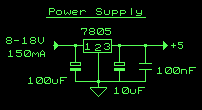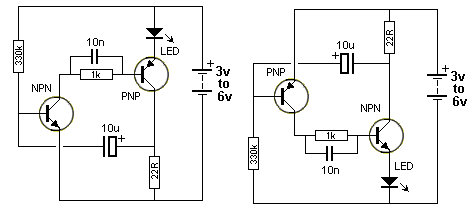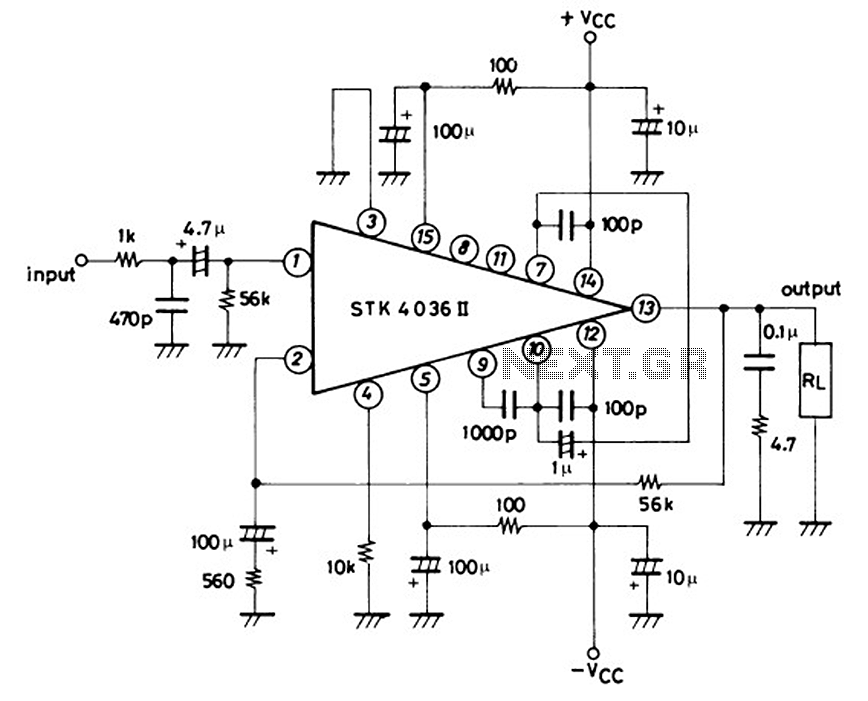
Simple 5V power supply for digital circuits

This circuit is a small +5V power supply, which is useful when experimenting with digital electronics. Small inexpensive wall transformers with variable output voltage are available from any electronics shop and supermarket. Those transformers are easily available, but usually their voltage regulation is very poor, which makes them not very usable for digital circuit experimenters unless a better regulation can be achieved in some way. The following circuit is the answer to the problem.
The described circuit functions as a regulated +5V power supply, suitable for powering various digital electronics projects. It typically incorporates a transformer, a rectifier, a filter capacitor, and a voltage regulator to provide stable output voltage.
1. **Transformer**: The circuit begins with a small wall transformer that steps down the AC mains voltage to a lower AC voltage. The output voltage of the transformer is selected based on the required input for the subsequent components, generally in the range of 7V to 9V AC to allow for adequate headroom for regulation.
2. **Rectifier**: The AC voltage from the transformer is then fed into a rectifier circuit, which can be a full-wave bridge rectifier composed of four diodes arranged in a bridge configuration. This converts the AC voltage into pulsating DC voltage. The choice of diodes should be based on the current rating and reverse voltage requirements of the application.
3. **Filter Capacitor**: Following the rectifier, a large electrolytic capacitor is used to smooth the pulsating DC output into a more stable DC voltage. This capacitor charges during the peaks of the rectified voltage and discharges during the troughs, thereby reducing ripple voltage and providing a more constant output.
4. **Voltage Regulator**: The smoothed DC voltage is then fed into a voltage regulator, commonly a linear regulator such as the 7805, which outputs a steady +5V. This component is crucial for ensuring that fluctuations in input voltage do not affect the output voltage, making it suitable for sensitive digital circuits. The regulator typically requires additional capacitors on its input and output to stabilize the voltage and improve transient response.
5. **Output**: The final output of the circuit provides a clean +5V DC voltage suitable for powering microcontrollers, logic circuits, and other digital devices.
Additional considerations include the heat dissipation of the voltage regulator, which may require a heatsink if the load current is significant. It is also advisable to include fuses or circuit protection components to safeguard against overcurrent conditions. Overall, this circuit design addresses the common challenges associated with using unregulated wall transformers in digital electronics experimentation.This circuit is a small +5V power supply, which is useful when experimenting with digital electronics. Small inexpensive wall tranformers with variable output voltage are available from any electronics shop and supermarket.
Those transformers are easily available, but usually their voltage regulation is very poor, which makes then not very usable for digital circuit experimenter unless a better regulation can be achieved in some way. The following circuit is the answer to the problem. 🔗 External reference
The described circuit functions as a regulated +5V power supply, suitable for powering various digital electronics projects. It typically incorporates a transformer, a rectifier, a filter capacitor, and a voltage regulator to provide stable output voltage.
1. **Transformer**: The circuit begins with a small wall transformer that steps down the AC mains voltage to a lower AC voltage. The output voltage of the transformer is selected based on the required input for the subsequent components, generally in the range of 7V to 9V AC to allow for adequate headroom for regulation.
2. **Rectifier**: The AC voltage from the transformer is then fed into a rectifier circuit, which can be a full-wave bridge rectifier composed of four diodes arranged in a bridge configuration. This converts the AC voltage into pulsating DC voltage. The choice of diodes should be based on the current rating and reverse voltage requirements of the application.
3. **Filter Capacitor**: Following the rectifier, a large electrolytic capacitor is used to smooth the pulsating DC output into a more stable DC voltage. This capacitor charges during the peaks of the rectified voltage and discharges during the troughs, thereby reducing ripple voltage and providing a more constant output.
4. **Voltage Regulator**: The smoothed DC voltage is then fed into a voltage regulator, commonly a linear regulator such as the 7805, which outputs a steady +5V. This component is crucial for ensuring that fluctuations in input voltage do not affect the output voltage, making it suitable for sensitive digital circuits. The regulator typically requires additional capacitors on its input and output to stabilize the voltage and improve transient response.
5. **Output**: The final output of the circuit provides a clean +5V DC voltage suitable for powering microcontrollers, logic circuits, and other digital devices.
Additional considerations include the heat dissipation of the voltage regulator, which may require a heatsink if the load current is significant. It is also advisable to include fuses or circuit protection components to safeguard against overcurrent conditions. Overall, this circuit design addresses the common challenges associated with using unregulated wall transformers in digital electronics experimentation.This circuit is a small +5V power supply, which is useful when experimenting with digital electronics. Small inexpensive wall tranformers with variable output voltage are available from any electronics shop and supermarket.
Those transformers are easily available, but usually their voltage regulation is very poor, which makes then not very usable for digital circuit experimenter unless a better regulation can be achieved in some way. The following circuit is the answer to the problem. 🔗 External reference





